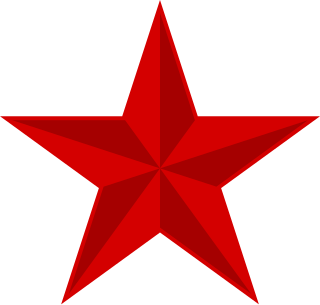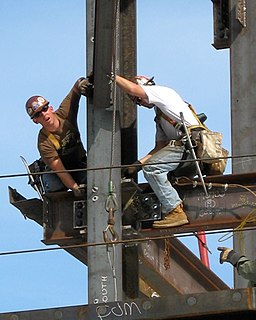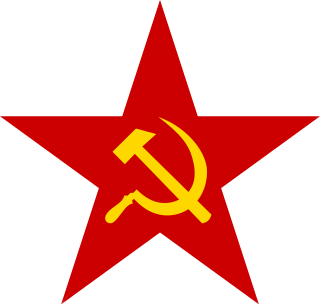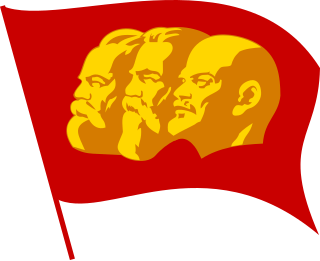This article's factual accuracy may be compromised due to out-of-date information.(February 2013) |
The following is a description of the social structure of Romania divided into three distinct categories.
This article's factual accuracy may be compromised due to out-of-date information.(February 2013) |
The following is a description of the social structure of Romania divided into three distinct categories.
Before World War II, Romania was primarily agrarian; in the late 1940s, about three-quarters of the population was engaged in subsistence agriculture from ever-shrinking plots of land (due to an increasing rural population). Although some industrial activity was encouraged by state contracts and foreign investment, industrial development was slow and failed to create alternative employment opportunities for the overpopulated and impoverished countryside. Atop the low social pyramid stood a disproportionately powerful social elite, a remnant of the nobility that had once owned most of the land in the old kingdom. Although reforms between 1917 and 1921 had left them with only 15% of the arable land, this aristocracy retained a powerful voice in political affairs.

World War II, also known as the Second World War, was a global war that lasted from 1939 to 1945. The vast majority of the world's countries—including all the great powers—eventually formed two opposing military alliances: the Allies and the Axis. A state of total war emerged, directly involving more than 100 million people from over 30 countries. The major participants threw their entire economic, industrial, and scientific capabilities behind the war effort, blurring the distinction between civilian and military resources. World War II was the deadliest conflict in human history, marked by 50 to 85 million fatalities, most of whom were civilians in the Soviet Union and China. It included massacres, the genocide of the Holocaust, strategic bombing, premeditated death from starvation and disease, and the only use of nuclear weapons in war.

Romania is a country located at the crossroads of Central, Eastern, and Southeastern Europe. It borders the Black Sea to the southeast, Bulgaria to the south, Ukraine to the north, Hungary to the west, Serbia to the southwest, and Moldova to the east. It has a predominantly temperate-continental climate. With a total area of 238,397 square kilometres (92,046 sq mi), Romania is the 12th largest country and also the 7th most populous member state of the European Union, having almost 20 million inhabitants. Its capital and largest city is Bucharest, and other major urban areas include Cluj-Napoca, Timișoara, Iași, Constanța, Craiova, and Brașov.

Subsistence agriculture occurs when farmers grow food crops to feed themselves and their families. In subsistence agriculture, farm output is targeted to survival and is mostly for local requirements with little or no surplus trade. The typical subsistence farm has a range of crops and animals needed by the family to feed and clothe themselves during the year. Planting decisions are made principally with an eye toward what the family will need during the coming year, and secondarily toward market prices. Tony Waters writes: "Subsistence peasants are people who grow what they eat, build their own houses, and live without regularly making purchases in the marketplace."
After World War II, Romania's social structure was drastically altered by the imposition of a political system envisioning a classless, egalitarian society. Marxist-Leninist doctrine holds that the establishment of a socialist state (in which the working class possesses the means of production and distribution of goods and political power) will ensure the eventual development of communism. Under communism, there would be no class conflict or exploitation of man by his fellow man. There would be an abundance of wealth, shared equally by all. The road to communism requires the primacy of the working class and the elimination of the ruling class and bourgeoisie. In Romania the latter was easily accomplished, but most of the population were peasants and not workers.

In political and social sciences, communism is the philosophical, social, political, and economic ideology and movement whose ultimate goal is the establishment of the communist society, which is a socioeconomic order structured upon the common ownership of the means of production and the absence of social classes, money, and the state.

The working class comprises those engaged in waged or salaried labour, especially in manual-labour occupations and industrial work. Working-class occupations include blue-collar jobs, some white-collar jobs, and most pink-collar jobs. Members of the working class rely for their income exclusively upon their earnings from wage labour; thus the category includes almost all of the working population of industrialized economies, as well as those employed in the urban areas of non-industrialized economies or in the rural workforce.

The bourgeoisie is a polysemous French term that can mean:
The Communist government (imposed by the Soviet Union in 1945) eliminated opposition to their consolidation of power by appeals to the working class. Disruption caused by World War II assisted the new government; much of the ruling elite had either emigrated or been killed, and many survivors left with the retreating German forces as the Red Army approached. Most Jews (who had constituted a large segment of the communal and financial elite before the war) either died in fascist Romania or fled the country over the next few years.

The Soviet Union, officially the Union of Soviet Socialist Republics (USSR), was a socialist state in Eurasia that existed from 30 December 1922 to 26 December 1991. Nominally a union of multiple national Soviet republics, its government and economy were highly centralized. The country was a one-party state, governed by the Communist Party with Moscow as its capital in its largest republic, the Russian Soviet Federative Socialist Republic. Other major urban centres were Leningrad, Kiev, Minsk, Alma-Ata, and Novosibirsk.

Germany, officially the Federal Republic of Germany, is a country in Central and Western Europe, lying between the Baltic and North Seas to the north, and the Alps to the south. It borders Denmark to the north, Poland and the Czech Republic to the east, Austria and Switzerland to the south, France to the southwest, and Luxembourg, Belgium and the Netherlands to the west.

The Workers' and Peasants' Red Army, frequently shortened to Red Army was the army and the air force of the Russian Soviet Federative Socialist Republic, and, after 1922, the Union of Soviet Socialist Republics. The army was established immediately after the 1917 October Revolution. The Bolsheviks raised an army to oppose the military confederations of their adversaries during the Russian Civil War. Beginning in February 1946, the Red Army, along with the Soviet Navy, embodied the main component of the Soviet Armed Forces; taking the official name of "Soviet Army", until its dissolution in December 1991.
Measures taken during the early days of communist rule eradicated what remained of the upper crust. Land reforms in 1945 eliminated large holdings, depriving the aristocracy of their power and economic base. The currency reform of 1947 (which essentially confiscated all money for the state) was ruinous for members of the commercial and industrial bourgeoisie who had not fled with their fortunes. The state also expropriated commercial and industrial properties; by 1950 90% of all industrial output was state-controlled, and by 1953 only 14% of shops were privately owned.

Monetary reform is any movement or theory that proposes a system of supplying money and financing the economy that is different from the current system.
Although opposition from the more economically and socially advanced members of society was eliminated almost immediately, the task of creating an industrial working class (in whose name the communists claimed power) had just begun. In 1950, less than 25% of the population lived in cities or worked in factories. Conditions in the countryside, however, were poised for change in the direction the regime required. The war and Soviet occupation had left the peasantry starving, with much of their livestock and capital destroyed. Their problems were compounded by a drought in 1945–1946, followed by a famine in which thousands died. More important for the regime, many of the peasants became detached from the land and were willing to work in factory jobs resulting from the Communist Party's industrialization program. [1]
The difference between communism in theory and communism in practice was especially pronounced in Romania, whose anemic economy was beset by inefficiency. An economic crisis beginning in the 1970s snowballed throughout the 1980s, leading to a sharp decline in living standards. In December 1989, the government headed by Nicolae Ceaușescu was forcibly overthrown, with rioting in Bucharest. The sudden removal of a state-controlled economy led to further erosion in the standard of living, with unemployment and job insecurity. [2] Social change in Romania has been slow, with progress toward a less-centrally-controlled economy sporadic in nature. [3]

Nicolae Ceaușescu was a Romanian communist politician. He was the general secretary of the Romanian Communist Party from 1965 to 1989 and hence the second and last Communist leader of Romania. He was also the country's head of state from 1967, serving as President of the State Council and from 1974 concurrently as President of the Republic until his overthrow in the Romanian Revolution in December 1989, part of a series of anti-Communist and anti-Soviet Union uprisings in Eastern Europe that year.

Bucharest is the capital and largest city of Romania, as well as its cultural, industrial, and financial centre. It is located in the southeast of the country, at 44°25′57″N26°06′14″E, on the banks of the Dâmbovița River, less than 60 km (37.3 mi) north of the Danube River and the Bulgarian border.
Agrarianism is a social philosophy or political philosophy which values rural society as superior to urban society and the independent farmer as superior to the paid worker, and sees farming as a way of life that can shape the ideal social values. It stresses the superiority of a simpler rural life as opposed to the complexity of city life.

Leninism is the political theory for the organisation of a revolutionary vanguard party and the achievement of a dictatorship of the proletariat as political prelude to the establishment of socialism. Developed by and named for the Russian revolutionary Vladimir Lenin, Leninism comprises socialist political and economic theories, developed from Marxism and Lenin's interpretations of Marxist theories, for practical application to the socio-political conditions of the Russian Empire of the early 20th century.

In political science, Marxism–Leninism was the official state ideology of the Soviet Union (USSR), the political parties of the Communist International, and of contemporary Stalinist political parties. Combining Leninist political praxis and Marxist socio-economics, the purpose of Marxism–Leninism is the two-stage revolutionary development of a capitalist state into a socialist state, guided by the leadership of a vanguard party of professional revolutionaries from the working class and the proletariat. The socialist state is instituted and governed by way of the dictatorship of the proletariat, which determines policy with democratic centralism.

The Communist Party of Vietnam (CPV) is the founding and ruling communist party of the Socialist Republic of Vietnam. Since 1988, it is the only legal party in the country. Although it nominally exists alongside the Vietnamese Fatherland Front, it maintains a unitary government and has centralised control over the state, military and media. The supremacy of the Communist Party is guaranteed by Article 4 of the national constitution. The current party's leader is Nguyễn Phú Trọng, who holds the titles of General Secretary of the Central Committee and Secretary of the Central Military Commission.

The Vargas Era is the period in the history of Brazil between 1930 and 1945, when the country was under the dictatorship of Getúlio Vargas.

Barrington Moore Jr. was an American political sociologist, and the son of forester Barrington Moore. He is famous for his Social Origins of Dictatorship and Democracy: Lord and Peasant in the Making of the Modern World (1966), a comparative study of modernization in Britain, France, the United States, China, Japan, Russia, Germany, and India. His many other works include Reflections on the Causes of Human Misery (1972) and an analysis of rebellion, Injustice: the Social Basis of Obedience and Revolt (1978).

The history of Poland from 1945 to 1989 spans the period of Soviet dominance and communist rule imposed after the end of World War II over Poland, as reestablished within new borders. These years, while featuring general industrialization and urbanization and many improvements in the standard of living, were marred by social unrest, political strife and severe economic difficulties.

The history of communism encompasses a wide variety of ideologies and political movements sharing the core theoretical values of common ownership of wealth, economic enterprise and property.
This article is about the history of Hungary from October 1918 to November 1940.
Land reform in North Vietnam can be understood as an agrarian reform in northern Vietnam throughout different periods, but in many cases it only refers to the one within the regime of Democratic Republic of Vietnam (DRV) in the 1950s. Land reform in North Vietnam is one of the most important economic and political programs launched by Viet Minh government during the years 1953-1956.

The collectivization of agriculture in Romania took place in the early years of the Communist regime. The initiative sought to bring about a thorough transformation in the property regime and organization of labour in agriculture. According to some authors, such as US anthropologist David Kideckel, agricultural collectivization was a "response to the objective circumstances" in postwar Romania, rather than an ideologically motivated enterprise. Unlike the Stalinist model applied in the Soviet Union in the 1930s, the collectivization was not achieved by mass liquidation of wealthy peasants, starvation or agricultural sabotage, but was accomplished gradually. This often included significant violence and destruction as employed by cadres, or Party representatives.
Four major land reforms have taken place in Romania: in 1864, 1921, 1945 and 1991. The first sought to undo the feudal structure that had persisted after the unification of the Danubian Principalities in 1859; the second, more drastic reform, tried to resolve lingering peasant discontent and create social harmony after the upheaval of World War I and extensive territorial expansion; the third, imposed by a mainly Communist government, did away with the remaining influence of the landed aristocracy but was itself soon undone by collectivisation, which the fourth then unravelled, leading to almost universal private ownership of land today.
Authoritarian socialism refers to a collection of political-economic systems describing themselves as socialist and rejecting the liberal democratic concepts of multi-party politics, freedom of assembly, habeas corpus and freedom of expression. Several countries, including the Soviet Union and Maoist China have been described by journalists and scholars as authoritarian socialist states. However, neither state used the term "authoritarian socialist" to describe themselves—these states declared themselves to be proletarian or people's democracies. Authoritarian socialism also encompassed ideologies like Arab and African socialism.

War communism or military communism was the economic and political system that existed in Soviet Russia during the Russian Civil War from 1918 to 1921. According to Soviet historiography, the ruling Bolshevik administration adopted this policy with the goal of keeping towns and the Red Army stocked with food and weapons. Circumstances dictated extreme measures: the ongoing civil war disrupted normal economic mechanisms and relations. War communism began in June 1918, enforced by the Supreme Economic Council, known as the Vesenkha. It ended on March 21, 1921 with the beginning of the New Economic Policy, which lasted until 1928.
Agrarian socialism is a political ideology which combines an agrarian way of life with a socialist economic system.
Revolutionary socialism is the socialist doctrine that social revolution is necessary in order to bring about structural changes to society. More specifically, it is the view that revolution is a necessary precondition for a transition from capitalism to socialism. Revolution is not necessarily defined as a violent insurrection; it is defined as seizure of political power by mass movements of the working class so that the state is directly controlled or abolished by the working class as opposed to the capitalist class and its interests. Revolutionary socialists believe such a state of affairs is a precondition for establishing socialism and orthodox Marxists believe that it is inevitable but not predetermined.
A socialist state, socialist republic, or socialist country is a sovereign state constitutionally dedicated to the establishment of socialism. The term "Communist state" is often used interchangeably in the West specifically when referring to single-party socialist states governed by Marxist–Leninist political parties despite being officially socialist states in the process of building socialism; these countries never describe themselves as communist nor as having achieved a communist society. Additionally, a number of countries which are not single-party states based on Marxism–Leninism make reference to socialism in their constitutions; in most cases these are constitutional references alluding to the building of a socialist society that have little to no bearing on the structure and development paths of these countries' political and economic systems.

The Economy of the Socialist Republic of Romania was centrally planned similar to the one of the Soviet Union. Most of the means of production were owned by the state, which established production plans as part of the Five-Year Plans.